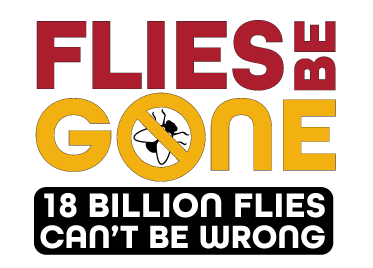The Lifecycle of the Fly

The life cycle of a fly is a rather simple process, considering it only passes through four distinct life cycle stages; the egg, the larva, the pupa, and the final adult form.
Fly Eggs
To start, a single fly egg is almost unnoticeable, measuring approximately 1.2 mm long. But, they are still easily missed even when laid in batches of 75 to 100! They are among the hardest insects to get rid of! And it’s no wonder when one considers the female, egg laying potential of 500 eggs in a single fly lifetime.
Where do Flies Lay Their Eggs?
The housefly egg depends on optimal conditions, such as warm, moist environments, to experience a healthy incubation period. They are usually laid within close range of the typical fly breeding grounds of manure and decay. However, if the eggs aren't supplied with the perfect environment, they may never hatch.
Fly Larvae
Larva will hatch within a short 8 – 24 hours, to a meal of the organic matter that their eggs were laid in. Here, they’ll spend the first half of their larvae stage feeding, sustenance that will carry them into their next life cycle stage.
What do Fly Larvae Look Like?
Fly Larva have a creamy white color ,a legless frame and a head with an indistinguishable face.Their length will vary between 3mm and 9mm.
Fly Pupa
The pupal case is approximately 8mm long and is composed of the Larvae skin. The skin initially appears yellow in hue, then turns red, brown, and finally black as a result of the pupal age. Furthermore, it completes its development in approximately 3 – 6 days, given ideal temperatures that range from 32-37 degrees Celsius.
Fly Adult
Once these stages are completed the fly is a fully formed adult. An adult fly can live up to 30 days with a female laying approximately 500-700 eggs!
